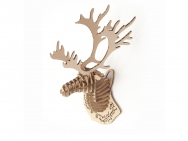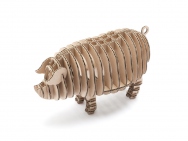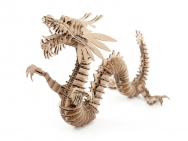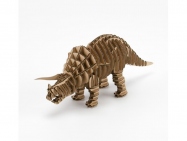FLATS

- Field:
- Manufacturing
- Location:
- Oita
FLATS
Products
-
 108pcs FLAT...¥6,528Approx: $44.83 USD
108pcs FLAT...¥6,528Approx: $44.83 USD -
 94pcs FLATS...¥6,528Approx: $44.83 USD
94pcs FLATS...¥6,528Approx: $44.83 USD -
 75pcs FLATS...¥6,276Approx: $43.10 USD
75pcs FLATS...¥6,276Approx: $43.10 USD -
 97pcs FLATS...¥6,276Approx: $43.10 USD
97pcs FLATS...¥6,276Approx: $43.10 USD -
 32pcs FLATS...¥5,520Approx: $37.90 USD
32pcs FLATS...¥5,520Approx: $37.90 USD -
 55pcs FLATS...¥5,520Approx: $37.90 USD
55pcs FLATS...¥5,520Approx: $37.90 USD -
 57pcs FLATS...¥6,276Approx: $43.10 USD
57pcs FLATS...¥6,276Approx: $43.10 USD -
 107pcs FLAT...¥6,528Approx: $44.83 USD
107pcs FLAT...¥6,528Approx: $44.83 USD -
 40pcs FLATS...¥5,520Approx: $37.90 USD
40pcs FLATS...¥5,520Approx: $37.90 USD -
 64pcs FLATS...¥6,276Approx: $43.10 USD
64pcs FLATS...¥6,276Approx: $43.10 USD -
 50pcs FLATS...¥6,276Approx: $43.10 USD
50pcs FLATS...¥6,276Approx: $43.10 USD -
 Miniature D...¥6,528Approx: $44.83 USD
Miniature D...¥6,528Approx: $44.83 USD -
 82pcs FLATS...¥6,528Approx: $44.83 USD
82pcs FLATS...¥6,528Approx: $44.83 USD
Yuki Matsuoka
Representative Director

Yuki Matsuoka was born in Kunisaki, Oita Prefecture in 1962. After earning a Master's degree from the Musashino Art University Department of Architecture, he worked in a building construction design office before going independent. In 1995, Matsuoka produced a cardboard prototype of a FLATS mannequin to be used for a solo show by his knitwear designer wife. In 1998, he founded Kunisakitime Co. Ltd. in his birthplace of Aki, Kunisaki and became President & CEO of the company. In 2001, Matsuoka won the Good Design Award for his "cardboard prefabricated mannequin". In 2004, he won grand prize of 15 million yen at the Second Annual Business Plan Grand Prix in Oita prefecture. With the prize money, Matsuoka upgraded his facilities and expanded employment into the organization’s current form. Since 2009, the company has been using Kunisaki City’s former West Musashi Elementary School building as its main facility. Yuki Matsuoka himself is also a visiting professor at Nippon Bunri University Department of Architecture.
Kunisaki Peninsula
The rather peculiar topography of the Kunisaki Peninsula consists of the 721m tall Mt Futago at the center with a series of valleys and ridges radiating from it. Further north, "Himeshima", an island mentioned in the Kojiki (the oldest surviving (8th century) chronicle in Japan), appears to float on the ocean. The region's tranquil countryside is dotted with dozens of temples and some shrines and was traditionally divided into six areas. The region was therefore collectively known as Rokugo Manzan (六郷満山), which literally means "Six Towns Full Mountain".
The unique local religious culture of Rokugo Manzan contains elements of Buddhism, Shinto and mountain worship, and revolves around the peninsula's numerous temples as well as Usa Shrine. A noteworthy characteristic of the Rokugo Manzan culture is the predominance of stone Buddha statues and other stone deities and guardians.
Gaze at a cross-sectional picture of the peninsula and it begins to resemble a human head. The east coast is the nose, mouth, chin, and throat, while the northern half of the radial shape is the brain. When you look at it like that, the projections from Mt Futago begin to look like a neuronal network! But where would the neck of the great giant be? This land evokes much to spark the imagination, as the numerous unofficial historical accounts, legends and anecdotes created by local people through the ages attest.
A somewhat remote, isolated area, Kunisaki Peninsula has been called the "island of the land" since the start of the modern era. Prior to the development of the land transportation system, the ocean played a central role. As three-quarters of the peninsula is surrounded by sea, in ancient times the north served as a base for traffic headed to the North Korean Peninsula, while the east linked to the Kinki area by passing through the islands of the Seto Inland Sea. Alive as a receptor in the literal sense, the area naturally received much information and people from the outside. Evidence of such remains in the rituals and rich history of the peninsula.
With its origins and history, indeed the name of fire festival itself being shrouded in mystery, the annual “Kebesu Festival” held on Oct.14 at Iwakura Shrine in Kushiki, Kunimi town lives up to its reputation as being ‘strange’. It features the masked Kebesu character and a fire ritual in which onlookers are showered in sparks.
Another Kunisaki fire festival is "Shujo Onie" held on Chinese New Year. During the ceremony, people pray for their family's safety, bumper crops, and good health while priests of the Tendai sect dress up as the demons Saibarai-oni and Shizume-oni and prowl around with torches. These non-evil demons are considered ancestors in a different form, and are greeted with food or liquor at local dwellings.
There is something that links these rituals. Both the "Kebesu" and the "demons" invade this world from an extraordinary "alien world" to bring a certain confusion to our daily lives, then scatter, calm down, and disappear in a heartbeat. It seems somewhat odd to describe it as an "alien world", but the point is that it should be considered a time and space outside the realm of everyday life. Demons and Kebesu, typical icons of the alien world, are unfortunately an endangered species. It is doubtless that encounters with time and space beyond ‘everyday events’ that are folded within our daily lives enrich us. In contrast, were the life that is visible in front of our eyes the only world, it would not be all that boring. However, modern society is heading toward the narrow present.
It is not difficult to imagine that the roots of these rituals are in the relationship between the internal and external, and the affairs on the boundaries of these. It seems memories of what came from overseas and brought fertility are engraved here. Given the terrain of Kunisaki Peninsula, information (DNA) brought by faraway visitors has permeated the threshold of the border and accumulated on the inside of Yamahida with a focus on Mt Futago. In that sense, it can be said that the peninsula itself has become a database in its oldest form. Although the reasons why this place bloomed with its own religious culture from the Nara to Heian eras, and why a stone working culture rarely seen anywhere else in the world remains here are unknown, it is probably due to the area’s special geography.
The New Oita Airport opened in Kunisaki Peninsula in 1971. It has become a major hub for air traffic over the last 40 years, attracting major companies such as Sony and Canon. Due to the expansion of companies associated with it and the global Internet boom that started in 1995, the spread of information and transportation systems has changed the area significantly once again. Although it will likely take a little longer for those results to be seen, the social environment around us still has serious issues. Due to post-war capitalism and the rapid growth of Japan, various distortions have eroded the lives of local consumers. It is also predicted that partially due to the aging phenomenon, the population of Kunisaki will drop to two-thirds of the current number in 30 years. Additionally, in modern society, the traditional religions that once blossomed in this area, whether Shinto or Buddhism, will no longer play a central role and will no doubt be required to update their approaches.
That said, I do not believe we should protect tradition, as doing so just creates stress and strain within modern society. I believe we must create a "new life" for our generation while re-reading information from the oldest layer of the database built through the culture and unique times of this land.
I want to introduce one last thing. A natural philosopher named Miura Baien once lived right next to the former West Musashi elementary school (closed down four years ago) where we are working on our current project. The house that he designed still remains.
Miura Baien (1723-1789) lived during the Kyoho period of the Edo era (1603~1867) under the eighth shogun Yoshimune Tokugawa. With the exception of just three trips, Baien spent his whole life without leaving his hometown in Kunisaki Peninsula. In addition to his family medical practice, he built his own academic framework called "Jorigaku". Baien is another predecessor who read information from this huge Kunisaki Peninsula database to construct pure thoughts. "Gengo" is Baien’s best-known work, but his work on economic theory called "Kagen" has begun to play a significant roll again in the modern world.
“Water, fire, wood, metal, earth, and bone are called the Six Organs, and Masanori, utilization, and welfare are the Three Concepts. Having said that, there are a thousand methods and ten thousand techniques for healing the coming generations that will not emerge in the Six Organs and Three Concepts.” "The people referred to the old saints as those who own the world. They are called "champions". The sources of these champions are water, fire, wood, metal, earth, and bone." (He is saying that wealth is not only from money, but has its roots in water, fire, wood, metal, earth, and bone, and derives from their use.)
Whatever boundaries we try to live within in modern society, a single person cannot escape from the global economic framework because the world economy runs off of finite natural resources. We must think about how to use "time and resources" once again in a contemporary environment. Just as resources are also finite for society, "time", the essence of "life", is limited for a single human being.
In our workplace, we started following "Kunisaki time" this year. To put it simply, the company has a three-day weekly holiday system. We come to work four days a week, and still adjust our time to work four days when there is a national holiday. We can go hiking, fishing, read, or do whatever we want on our days off. This way of thinking leads to individual skill development and improves business efficiency.
Marx once said, "The basic prerequisite of the realm of freedom is the shortening of the working-day". Will it really be the first step to the realm of freedom? AKI Co.'s challenges have only just begun.
The unique local religious culture of Rokugo Manzan contains elements of Buddhism, Shinto and mountain worship, and revolves around the peninsula's numerous temples as well as Usa Shrine. A noteworthy characteristic of the Rokugo Manzan culture is the predominance of stone Buddha statues and other stone deities and guardians.
Gaze at a cross-sectional picture of the peninsula and it begins to resemble a human head. The east coast is the nose, mouth, chin, and throat, while the northern half of the radial shape is the brain. When you look at it like that, the projections from Mt Futago begin to look like a neuronal network! But where would the neck of the great giant be? This land evokes much to spark the imagination, as the numerous unofficial historical accounts, legends and anecdotes created by local people through the ages attest.
A somewhat remote, isolated area, Kunisaki Peninsula has been called the "island of the land" since the start of the modern era. Prior to the development of the land transportation system, the ocean played a central role. As three-quarters of the peninsula is surrounded by sea, in ancient times the north served as a base for traffic headed to the North Korean Peninsula, while the east linked to the Kinki area by passing through the islands of the Seto Inland Sea. Alive as a receptor in the literal sense, the area naturally received much information and people from the outside. Evidence of such remains in the rituals and rich history of the peninsula.
With its origins and history, indeed the name of fire festival itself being shrouded in mystery, the annual “Kebesu Festival” held on Oct.14 at Iwakura Shrine in Kushiki, Kunimi town lives up to its reputation as being ‘strange’. It features the masked Kebesu character and a fire ritual in which onlookers are showered in sparks.
Another Kunisaki fire festival is "Shujo Onie" held on Chinese New Year. During the ceremony, people pray for their family's safety, bumper crops, and good health while priests of the Tendai sect dress up as the demons Saibarai-oni and Shizume-oni and prowl around with torches. These non-evil demons are considered ancestors in a different form, and are greeted with food or liquor at local dwellings.
There is something that links these rituals. Both the "Kebesu" and the "demons" invade this world from an extraordinary "alien world" to bring a certain confusion to our daily lives, then scatter, calm down, and disappear in a heartbeat. It seems somewhat odd to describe it as an "alien world", but the point is that it should be considered a time and space outside the realm of everyday life. Demons and Kebesu, typical icons of the alien world, are unfortunately an endangered species. It is doubtless that encounters with time and space beyond ‘everyday events’ that are folded within our daily lives enrich us. In contrast, were the life that is visible in front of our eyes the only world, it would not be all that boring. However, modern society is heading toward the narrow present.
It is not difficult to imagine that the roots of these rituals are in the relationship between the internal and external, and the affairs on the boundaries of these. It seems memories of what came from overseas and brought fertility are engraved here. Given the terrain of Kunisaki Peninsula, information (DNA) brought by faraway visitors has permeated the threshold of the border and accumulated on the inside of Yamahida with a focus on Mt Futago. In that sense, it can be said that the peninsula itself has become a database in its oldest form. Although the reasons why this place bloomed with its own religious culture from the Nara to Heian eras, and why a stone working culture rarely seen anywhere else in the world remains here are unknown, it is probably due to the area’s special geography.
The New Oita Airport opened in Kunisaki Peninsula in 1971. It has become a major hub for air traffic over the last 40 years, attracting major companies such as Sony and Canon. Due to the expansion of companies associated with it and the global Internet boom that started in 1995, the spread of information and transportation systems has changed the area significantly once again. Although it will likely take a little longer for those results to be seen, the social environment around us still has serious issues. Due to post-war capitalism and the rapid growth of Japan, various distortions have eroded the lives of local consumers. It is also predicted that partially due to the aging phenomenon, the population of Kunisaki will drop to two-thirds of the current number in 30 years. Additionally, in modern society, the traditional religions that once blossomed in this area, whether Shinto or Buddhism, will no longer play a central role and will no doubt be required to update their approaches.
That said, I do not believe we should protect tradition, as doing so just creates stress and strain within modern society. I believe we must create a "new life" for our generation while re-reading information from the oldest layer of the database built through the culture and unique times of this land.
I want to introduce one last thing. A natural philosopher named Miura Baien once lived right next to the former West Musashi elementary school (closed down four years ago) where we are working on our current project. The house that he designed still remains.
Miura Baien (1723-1789) lived during the Kyoho period of the Edo era (1603~1867) under the eighth shogun Yoshimune Tokugawa. With the exception of just three trips, Baien spent his whole life without leaving his hometown in Kunisaki Peninsula. In addition to his family medical practice, he built his own academic framework called "Jorigaku". Baien is another predecessor who read information from this huge Kunisaki Peninsula database to construct pure thoughts. "Gengo" is Baien’s best-known work, but his work on economic theory called "Kagen" has begun to play a significant roll again in the modern world.
“Water, fire, wood, metal, earth, and bone are called the Six Organs, and Masanori, utilization, and welfare are the Three Concepts. Having said that, there are a thousand methods and ten thousand techniques for healing the coming generations that will not emerge in the Six Organs and Three Concepts.” "The people referred to the old saints as those who own the world. They are called "champions". The sources of these champions are water, fire, wood, metal, earth, and bone." (He is saying that wealth is not only from money, but has its roots in water, fire, wood, metal, earth, and bone, and derives from their use.)
Whatever boundaries we try to live within in modern society, a single person cannot escape from the global economic framework because the world economy runs off of finite natural resources. We must think about how to use "time and resources" once again in a contemporary environment. Just as resources are also finite for society, "time", the essence of "life", is limited for a single human being.
In our workplace, we started following "Kunisaki time" this year. To put it simply, the company has a three-day weekly holiday system. We come to work four days a week, and still adjust our time to work four days when there is a national holiday. We can go hiking, fishing, read, or do whatever we want on our days off. This way of thinking leads to individual skill development and improves business efficiency.
Marx once said, "The basic prerequisite of the realm of freedom is the shortening of the working-day". Will it really be the first step to the realm of freedom? AKI Co.'s challenges have only just begun.

Starting from prefabricated cardboard mannequins...
FLATS